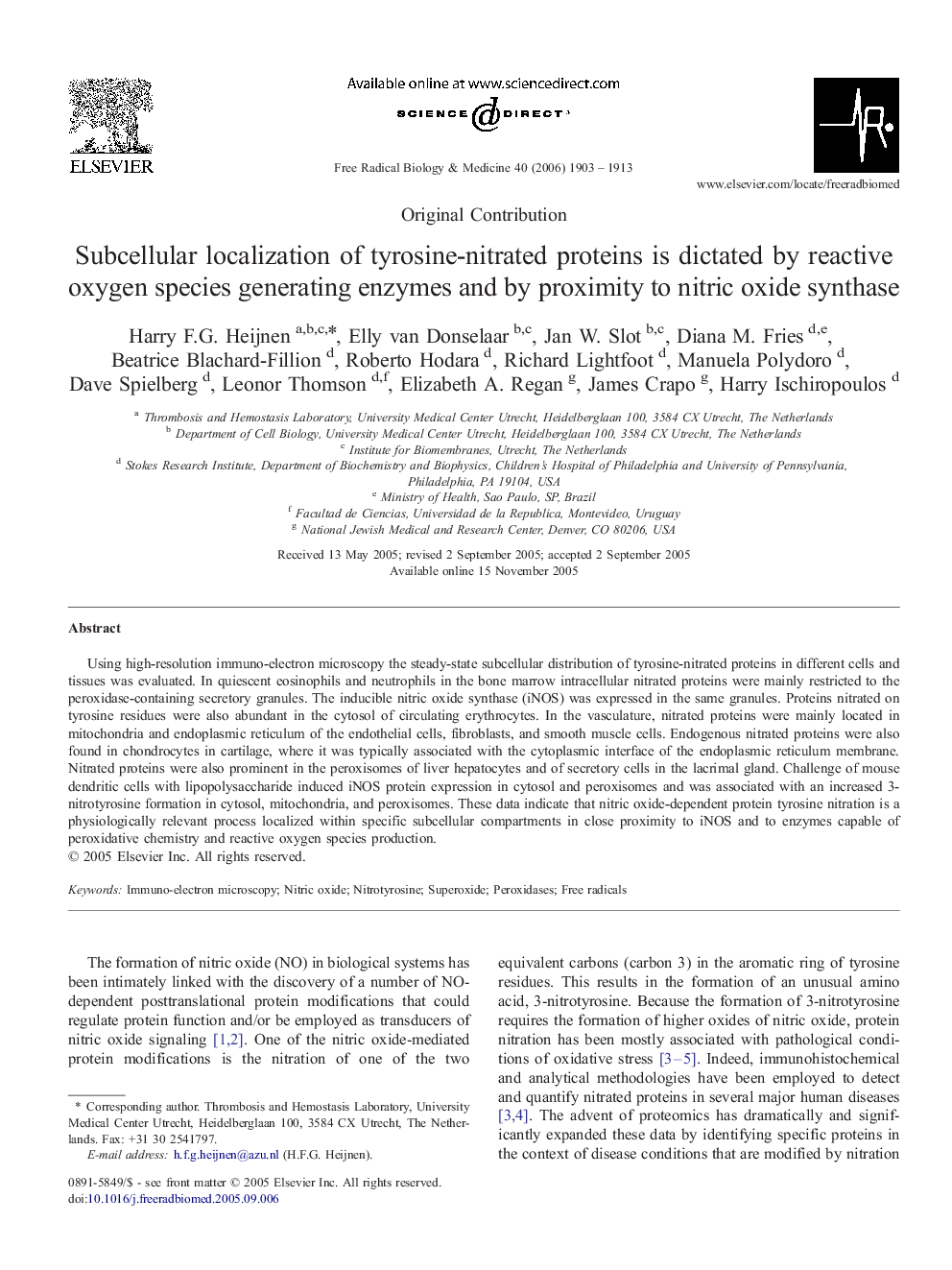| Article ID | Journal | Published Year | Pages | File Type |
|---|---|---|---|---|
| 1911622 | Free Radical Biology and Medicine | 2006 | 11 Pages |
Using high-resolution immuno-electron microscopy the steady-state subcellular distribution of tyrosine-nitrated proteins in different cells and tissues was evaluated. In quiescent eosinophils and neutrophils in the bone marrow intracellular nitrated proteins were mainly restricted to the peroxidase-containing secretory granules. The inducible nitric oxide synthase (iNOS) was expressed in the same granules. Proteins nitrated on tyrosine residues were also abundant in the cytosol of circulating erythrocytes. In the vasculature, nitrated proteins were mainly located in mitochondria and endoplasmic reticulum of the endothelial cells, fibroblasts, and smooth muscle cells. Endogenous nitrated proteins were also found in chondrocytes in cartilage, where it was typically associated with the cytoplasmic interface of the endoplasmic reticulum membrane. Nitrated proteins were also prominent in the peroxisomes of liver hepatocytes and of secretory cells in the lacrimal gland. Challenge of mouse dendritic cells with lipopolysaccharide induced iNOS protein expression in cytosol and peroxisomes and was associated with an increased 3-nitrotyrosine formation in cytosol, mitochondria, and peroxisomes. These data indicate that nitric oxide-dependent protein tyrosine nitration is a physiologically relevant process localized within specific subcellular compartments in close proximity to iNOS and to enzymes capable of peroxidative chemistry and reactive oxygen species production.
